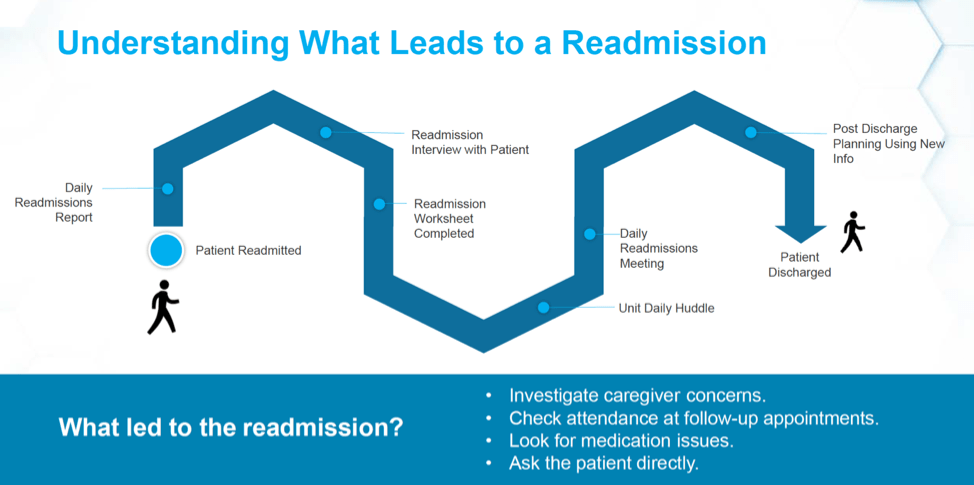Hospital Readmission Prevention
Several things emerge when examining factors that facilitate the prevention of readmissions- for all patients, regardless of their race, ethnicity, culture, class, language proficiency, or level of health literacy. Our agency has teamed up with local agencies to provide education on these factors.
Collect Critical Data
Gathering data on who is readmitted, for what condition, from what location, what factors, and at what cost helps develop a better understanding of specific risk populations, settings, and individual characteristics and how they relate to readmissions—the more detailed the data, the better the foundation for interventions. As we consider addressing readmissions among diverse populations, tracking certain types of information is critical. These include:
Language
Patients with limited-English proficiency are at higher risk for preventable readmission than English-speaking patients. Gather data on language by asking the patient’s preferred spoken language for care, as well as preferred written language.
Education
Patients with low health literacy are at risk for readmissions. Assessing patients’ ability to understand health information and responding appropriately to patients’ level of health literacy is essential.
Disability
People with disabilities have more complex admissions. Knowing this early on, and preparing accordingly, can help ensure appropriate care and a smooth transition after hospitalization.
Linkage to Primary Care/Usual Source of Care
Individuals are less likely to be linked to a primary care provider or usual source of care, affecting readmissions. Gathering data on patients’ providers helps identify which patients need referrals to primary care.
Recognize the Root Causes
Analyzing demographics and risk data enables the identification of root causes and characteristics associated with readmission. With this information, a process can be initiated to address barriers and develop systems to overcome or prevent them. Stratifying data and analyzing quality measures, such as 30-day readmission rates, by race, ethnicity, and language, allows organizations to measure the equity of care provided. Offering data clearly and efficiently allows the network to understand gaps in care.
Our Agency has Created Teams that:
Assess risk before admission and continue to address risk factors before, during, and after a hospital stay. Strategies implemented midway through a hospital stay or at discharge are rarely effective. Early intervention is essential because it may require more time to communicate effectively and address patients’ needs.

